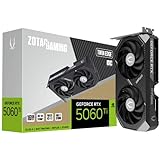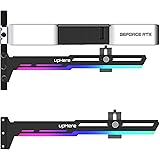The Bitmain Antminer Z9 Mini, released in 2018, represented a significant leap forward in the mining of Equihash-based cryptocurrencies. In its time it was a Revolution in Equihash Mining This post explores the impact of the Z9 Mini on the cryptocurrency mining landscape, examining its technical specifications, economic implications, and the broader context of ASIC development.
The Rise of ASICs and the Challenge to GPU Mining
Before delving into the specifics of the Z9 Mini, it’s essential to understand the evolution of cryptocurrency mining hardware. Initially, cryptocurrencies like Bitcoin were mined using CPUs (Central Processing Units). As the difficulty of mining increased, GPUs (Graphics Processing Units) became the preferred choice due to their superior parallel processing capabilities. However, the emergence of Application-Specific Integrated Circuits (ASICs) marked a turning point. ASICs are specialized hardware designed for a single purpose, in this case, mining a specific cryptocurrency algorithm. This specialization allows ASICs to achieve significantly higher hash rates with lower power consumption compared to CPUs or GPUs.

The introduction of ASICs often sparks controversy within cryptocurrency communities. While ASICs offer increased efficiency and profitability for miners, they also raise concerns about centralization. ASICs are typically manufactured by a limited number of companies, potentially leading to a concentration of mining power in the hands of a few large entities. This can undermine the decentralized nature of cryptocurrencies, making them more vulnerable to attacks and manipulation.
The Bitmain Antminer Z9 Mini: Specifications and Performance
The Bitmain Antminer Z9 Mini was specifically designed for mining cryptocurrencies that utilize the Equihash algorithm. Equihash is a memory-hard algorithm, meaning it requires a large amount of memory to perform the necessary computations. This was initially intended to make it ASIC-resistant, giving GPUs a competitive advantage. However, Bitmain successfully developed an ASIC capable of efficiently mining Equihash, disrupting the existing mining ecosystem.
The Z9 Mini boasts a hash rate of 10,000 Sol/s (solutions per second), consuming approximately 300 watts of power. This level of performance was groundbreaking at the time of its release. To put this in perspective, Bitmain claimed the Z9 Mini had the hashing power of nearly 13 GTX 1080 Ti GPUs while consuming only the power of one. This dramatic improvement in efficiency made the Z9 Mini an attractive option for miners looking to maximize their profitability.
Other key specifications of the Z9 Mini include a weight of 3. 5 kg, a noise level of 65 db, and a requirement for an ATX PSU with four 6-pin PCIe connectors. The device operates at a voltage of 12V and is designed to function in temperatures up to 40°C. The Z9 Mini connects to the network via Ethernet, ensuring a stable and reliable connection.
Impact on Equihash-Based Cryptocurrencies
The release of the Z9 Mini had a significant impact on the landscape of Equihash-based cryptocurrencies. Zcash (ZEC), one of the most prominent cryptocurrencies using Equihash, experienced a surge in mining difficulty as miners flocked to the Z9 Mini to capitalize on its superior performance. This increased difficulty made it more challenging for GPU miners to compete, leading to a decline in their profitability.
Other Equihash-based cryptocurrencies, such as ZenCash (ZEN), Zclassic (ZCL), Bitcoin Gold (BTG), Komodo (KMD), and Hush (HUSH), were also affected by the Z9 Mini. The increased availability of ASIC mining power made these cryptocurrencies more susceptible to 51% attacks, where a malicious actor gains control of the majority of the network’s hashing power and can manipulate transactions.
In response to the rise of ASIC mining, some Equihash-based cryptocurrencies considered or implemented changes to their algorithms to maintain ASIC resistance. For example, Bitcoin Gold underwent a hard fork to change its mining algorithm, rendering the Z9 Mini and other Equihash ASICs obsolete. These efforts to resist ASICs highlight the ongoing tension between the desire for decentralization and the economic incentives of specialized mining hardware.
Economic Implications and Profitability
The Z9 Mini’s profitability was heavily influenced by factors such as the price of the mined cryptocurrency, the cost of electricity, and the difficulty of mining. At the time of its release, the Z9 Mini offered a significant return on investment for many miners. However, as more Z9 Minis came online, the mining difficulty increased, reducing the profitability for all miners. Additionally, fluctuations in the price of Zcash and other Equihash-based cryptocurrencies could significantly impact the Z9 Mini’s profitability.
The initial price of the Z9 Mini was $1,999, with a limit of one miner per user. This limited availability, combined with the high demand, led to inflated prices on the secondary market. Some miners were willing to pay a premium to acquire the Z9 Mini and gain a competitive edge in the Equihash mining landscape.
Over time, the profitability of the Z9 Mini has declined as newer and more efficient ASICs have been released. The lifespan of ASIC miners is typically shorter than that of GPUs, as new generations of hardware render older models obsolete. This constant cycle of innovation and obsolescence is a key characteristic of the cryptocurrency mining industry.
The Broader Context of ASIC Development
The development of the Z9 Mini was part of a broader trend of ASIC development in the cryptocurrency mining industry. Bitmain, the manufacturer of the Z9 Mini, has been a dominant player in the ASIC market, producing miners for various algorithms, including SHA-256 (Bitcoin), Scrypt (Litecoin), and X11 (Dash). The company’s success has been driven by its ability to design and manufacture highly efficient and powerful ASICs.
Other companies have also entered the ASIC market, competing with Bitmain and driving innovation. This competition has led to the development of more advanced ASICs with higher hash rates and lower power consumption. The ongoing race for mining efficiency has transformed the cryptocurrency mining landscape, making it increasingly difficult for smaller miners to compete without access to specialized hardware.
The development of ASICs has also raised ethical concerns. Some critics argue that ASIC manufacturers have an unfair advantage, as they can mine cryptocurrencies with their own hardware before releasing it to the public. This can allow them to accumulate a significant amount of cryptocurrency before the mining difficulty increases, giving them an unfair profit.
Future Developments and the Evolution of Mining
The future of cryptocurrency mining is likely to be shaped by ongoing developments in ASIC technology and the potential emergence of new mining algorithms. As ASICs become more powerful and efficient, the barrier to entry for profitable mining will continue to rise. This could lead to further centralization of mining power in the hands of large mining farms and ASIC manufacturers.
However, there is also a growing movement towards more decentralized and ASIC-resistant mining algorithms. These algorithms are designed to be more accessible to individual miners using GPUs or other readily available hardware. The goal is to create a more level playing field and prevent the concentration of mining power.
Quantum computing poses a potential threat to the security of many cryptocurrencies. Quantum computers could potentially break the cryptographic algorithms used to secure blockchains, rendering them vulnerable to attacks. This has led to research into quantum-resistant cryptographic algorithms that could be used to protect cryptocurrencies from future quantum attacks.
Another area of development is the exploration of alternative consensus mechanisms. Proof-of-Work (PoW), the consensus mechanism used by Bitcoin and many other cryptocurrencies, is energy-intensive and can lead to environmental concerns. Proof-of-Stake (PoS) is an alternative consensus mechanism that requires users to stake their cryptocurrency holdings to validate transactions. PoS is generally more energy-efficient than PoW and can offer other benefits, such as increased security and faster transaction times.
The Bitmain Antminer Z9 Mini represented a significant advancement in Equihash mining, demonstrating the power and efficiency of ASICs. While the Z9 Mini offered substantial economic benefits to miners at the time of its release, it also raised concerns about centralization and the impact on GPU miners. The ongoing evolution of ASIC technology and the development of new mining algorithms will continue to shape the future of cryptocurrency mining, with the industry constantly adapting to new challenges and opportunities. As the cryptocurrency landscape evolves, the tension between decentralization, security, and economic efficiency will continue to drive innovation and shape the future of blockchain technology.
Summary of the Bitmain Antminer Z9 Mini Specifications :
- Device Weight : 3.5 kg
- Noise level : 65 db
- Fan(s) : 1
- Voltage : 12V
- Connection : Ethernet
- Operating Temperature : 40 °C

Bitmain Antminer Z9 Mini Hashrate :
Hashing algorithm : Equihash Only
- Equihash [ Zcash(ZEC) – ZenCash(ZEN) & (ZCL) & BitcoinGold(BTG) & (KMD) & (HUSH) ] Mining Hashrate : 10000 Sol/s
Power Consumption : 300 Watts/Per Hour
Power Efficiency : 30 j/kh
- Antminer Z9 mini need an ATX PSU with sufficient 4 six-pin PCIe connectors.
- Bitmain recommends the APW3++ to power the Antminer Z9 mini.
Bitmain Antminer Z9 Mini Price : $1,999
- Shipping starts in 20-30 June with Only 1 Antminer Z9 Mini Miner Limit per user
- Bitmain Antminer Z9 Mini will not be shipped to HongKong, Macau and Taiwan.
- Bitmain say that : ” Shipped devices may have a different industrial design than this officialy announced photo”.
So, you must noticed that Bitmain Antminer Z9 Mini has the hashing power of nearly 13 GTX 1080 TI’s while consuming only the power needed to run 1 GTX 1080 TI at a price of 2 GTX 1080 TI’s Only.





at what difficulty does this mine at?